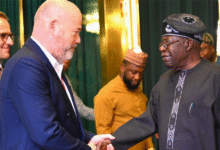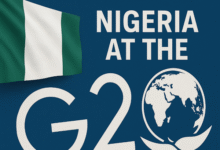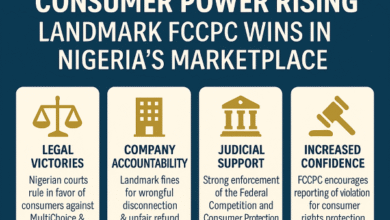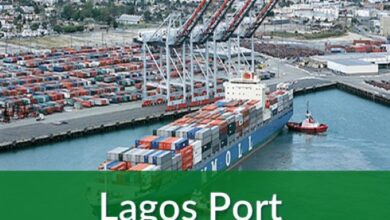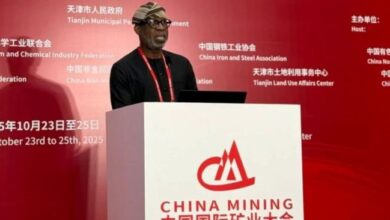Trump’s tariffs won’t shake Africa, says Okonjo-Iweala

Dr. Ngozi Okonjo-Iweala, Director-General of the World Trade Organization (WTO), has downplayed the potential impact of fresh U.S. tariffs under former President Donald Trump’s trade agenda on Africa, but warned that the continent’s low trade volume with the United States reflects a deeper structural challenge.
Speaking during an interview with Nigerian journalists at the World Bank/IMF Spring Meetings in Washington D.C. on Friday, Okonjo-Iweala explained that Africa’s direct exposure to U.S. trade policy shocks remains limited.
“Only 6.5% of Africa’s exports are destined for the United States, and just 4.4% of imports originate from there. The trade volume is quite small, so the immediate impact of these tariffs on Africa will not be significant,” she said.
While the reassurance may bring relief in the short term, Okonjo-Iweala was quick to note that low trade engagement with the world’s largest economy is nothing to celebrate.
A Missed Opportunity for Growth
Rather than simply weathering external shocks, the WTO chief emphasized that Africa must urgently rethink its trade strategy.
“It’s not ideal that our trade footprint with the U.S. is so minimal. It reflects lost opportunities for investment, industrialisation, and stronger integration into global supply chains,” she stressed.
Africa’s underwhelming share of global trade—currently around 3%—continues to limit its ability to leverage international commerce for domestic development.
Okonjo-Iweala highlighted the example of Lesotho, which exports about $200 million worth of textiles to the U.S. annually. Despite this success, Lesotho remains vulnerable as the U.S. market contracts and trade preferences waver. Meanwhile, the broader African continent spends over $7 billion annually importing textiles—a figure that underscores the massive opportunity for intra-African trade that remains untapped.
“Lesotho could be selling within Africa, not just to the U.S.,” she said.
Call for Strategic Realignment
Okonjo-Iweala called for the U.S. to reconsider the tariff burden on least-developed countries, pointing out that many of these economies lack the capacity to absorb new trade costs without severe domestic consequences.
Still, she insists that the bigger solution lies within Africa itself: a robust push for increased intra-continental trade, stronger regional value chains, and reduced overreliance on volatile external markets.
Today, intra-African trade stands at a mere 16% to 20%, a far cry from Europe’s intra-regional trade level of nearly 70%.
“We cannot grow if we are only trading externally where we are a mere 3% of world trade, and even internally, where our intra-African trade remains low,” Okonjo-Iweala concluded.
BRANDECONOMY ANALYSIS: Beyond Trump, Africa’s Trade Choices Matter More
While Trump’s trade policies generate headlines, the bigger story for Africa is structural: too little trade, too few markets, and too much dependence on narrow export sectors.
The emergence of the African Continental Free Trade Area (AfCFTA) provides a framework for reversing this trend, but the progress remains slow. Implementation bottlenecks, infrastructural deficits, and tariff/non-tariff barriers continue to stunt the bloc’s potential.
Africa must also modernize its supply chains, improve product standards, and invest in manufacturing capacity if it hopes to transform trade from a vulnerability into a growth engine.
As Okonjo-Iweala signals, self-reliance through smarter internal trade may ultimately shield Africa better than any U.S. tariff waivers or special preferences.
Insight:
In the shifting global trade landscape, Africa must seize its destiny. The world’s protectionist tilt—whether from Washington or Beijing—demands that Africa build resilience within, not wait for concessions without. A continent that trades more with itself will not only grow faster but also buffer itself from external political shocks.



